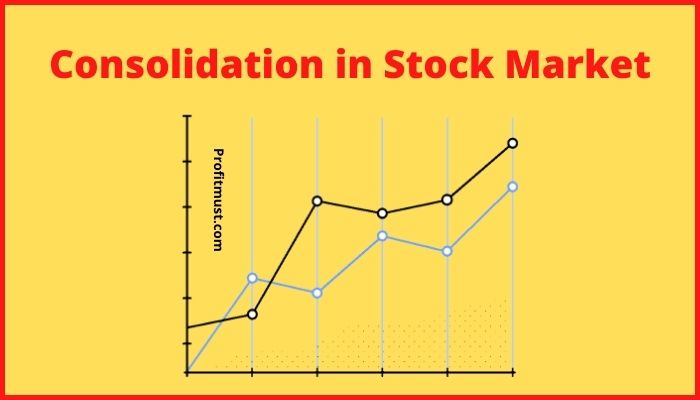Buying a stock at a higher price or buying less quality in the past for a good stock both situations always give us a feeling of regret. To overcome both of the situations, the strategy of averaging can help you. However, do you know what is averaging in stock market?
Let’s discuss averaging in detail with examples.
Table of Contents
What is Averaging in Stock Market?
In the stock market, averaging is a collection of systematic investing techniques based on the core premise of lowering or raising share prices to mitigate market volatility.
A trader can employ a number of averaging approaches in a range of market conditions. In a developing bull market, for example, averaging lowers the price of a freshly acquired stock.
In this example, good fundamentals such as increasing PAT and constant revenue growth are used to gradually expand one’s position.
In a declining market, on the other end, averaging is used to lower one’s cost of loss, resulting in increased revenue from the number of stocks purchased.

How to do averaging in stock market?
After understanding what is averaging in stock market, let’s check out how to do it? Traders in the stock market use a variety of averaging methods listed below:
-
Averaging down stocks
This is among the most widely used averaging techniques. It is carried out by purchasing additional shares after the share price has fallen after the initial acquisition.
Buying more stocks lowers the average cost of all held stocks, which lowers the breakeven point. The below example shows this.
Example of averaging down stocks
Both C and D are optimistic about the performance of abc business. They each have a profit target of 1,150. C decides to make a lump-sum investment of 50 thousand in investable capital at point X.
D studies the volatility and invests half of his 50 thousand investable capital at point X, with a second chance to invest the balance 25,000 at point Y, which is his support level.
D was able to lower her breakeven point to 1,021 using this averaging strategy. Once the stock price hits this level, he can profitably exit his bet.
Instead, A can wait for the stock price to reach 1,080, which was his initial purchase price, in order to break even, resulting in reduced profits.
-
Averaging up stocks
In a bull market, averaging upwards is a popular approach. Traders that use this approach acquire fresh units if they are confident that the stock’s initial trend is intact and has significant growth potential. Let’s take an example to understand it in a better way.
Example of Averaging up Stocks
Consider X, who is optimistic on Abc stock and purchases 50 stocks at 1560. Suppose that the Abc stock rises from this initial purchase price during the next several days. A makes further buys at 1720 and 1850, now certain of his bullish prediction.
A increased his total transaction cost to 256500 since he thought the stock would trade greater at these levels. Y buys 50 stocks of Abc at a price of 1,560 without averaging it. Stock’s final target was 1950.
Y, on the other hand, ended up with 50 shares despite having the same bullish outlook and not averaging up his position. A’s net profit when he quits his position is 36,000. Instead, B’s net profit is 19,500 when he quits his trade.
-
Averaging via Pyramiding
Pyramiding is a risky trading method that includes compounding one’s current positions as the stock price rises. It is classified as an averaging strategy because it aims to increase the average price by taking new positions in a trade where they forecast optimistic growth.
It is appropriate for individuals who are capable of dealing with high-risk scenarios. A new position is always taken at the option of the trader, based on a study of chart pattern breakouts, moving average breakouts, resistance level penetration, and other technical analysis.

Example of when to average up stocks
Amplification works effectively in the trader’s favour as long as they can ride the trend. Once the price trend reverses, though, it can quickly turn against them.
When a pyramid trader takes the highest or lowest position in a trend, it becomes difficult to limit losses when the trendline reverses. To avoid large losses, a stop-loss is required.
A typical or traditional pyramid method entails purchasing the largest holding in a firm at the outset, then gradually adding further positions.
Then there’s the inverted pyramid, which entails gradually adding new positions to a strong stock.
Which one is the best averaging up stocks Approach?
Averaging is a frequent trading method in the stock market that involves scaling up or down on the share price to reduce market volatility.
Averaging down is only useful when a stock is having strong fundamentals. while Averaging up is just required to follow the trade. Pyramiding Approach is risky & not advisable for beginners.

Conclusion
Whenever you think about averaging make sure you fully understand what you are doing? Averaging is a great way to make extra profit and it will be risky if done unknowingly.
This is all from our side regarding what is averaging in stock market. Let us know your views about is averaging down a good idea? in the comment section.
Other Interesting blogs related to averaging down stocks:
Best technical analysis app for Indian stock market
Best Indicator for Intraday Trading
Best Books For Stock Market Beginners in India
Frequently Asked Questions About When to Average up Stocks?
What is averaging in stock market example?
Consider X, who is optimistic on Abc stock and purchases 50 stocks at 1560. Suppose that the Abc stock rises from this initial purchase price during the next several days. A makes further buys at 1720 and 1850, now certain of his bullish prediction. A increased his total transaction cost to 256500 since he thought the stock would trade greater at these levels. Y buys 50 stocks of Abc at a price of 1,560 without averaging it. Stock’s final target was 1950. Y, on the other hand, ended up with 50 shares despite having the same bullish outlook and not averaging up his position. A’s net profit when he quits his position is 36,000. Instead, B’s net profit is 19,500 when he quits his trade.
Is it good to average up in stocks?
Yes, It is the most safe approach in all 3 approaches of Averaging. When you average up you will be able to do it in good company only as bad companies aren't able to go higher like this.
Averaging down day trading
When a trader buys an asset, the price reduces, and if the trader buys more, the price drops even more. This is known as averaging down. It's called averaging down since the asset's or financial instrument's average cost has decreased.
When to buy more of the same stock?
If you believe the stock has dropped as a result of the market's overreaction to something, buying more shares could be a good idea. Similarly, if you believe the firm has not changed fundamentally, a reduced share price may be a wonderful opportunity to buy more stock at a discount.
How to calculate average trading price?
Add all of the prices together and divide by the quantity of purchases you made. If you buy 100 units of a firm for inr 1000 and another 50 shares for inr 1120, your average price is 1,040. You'll need to use a weighted average if you didn't buy the same quantity of stocks in every transaction.


